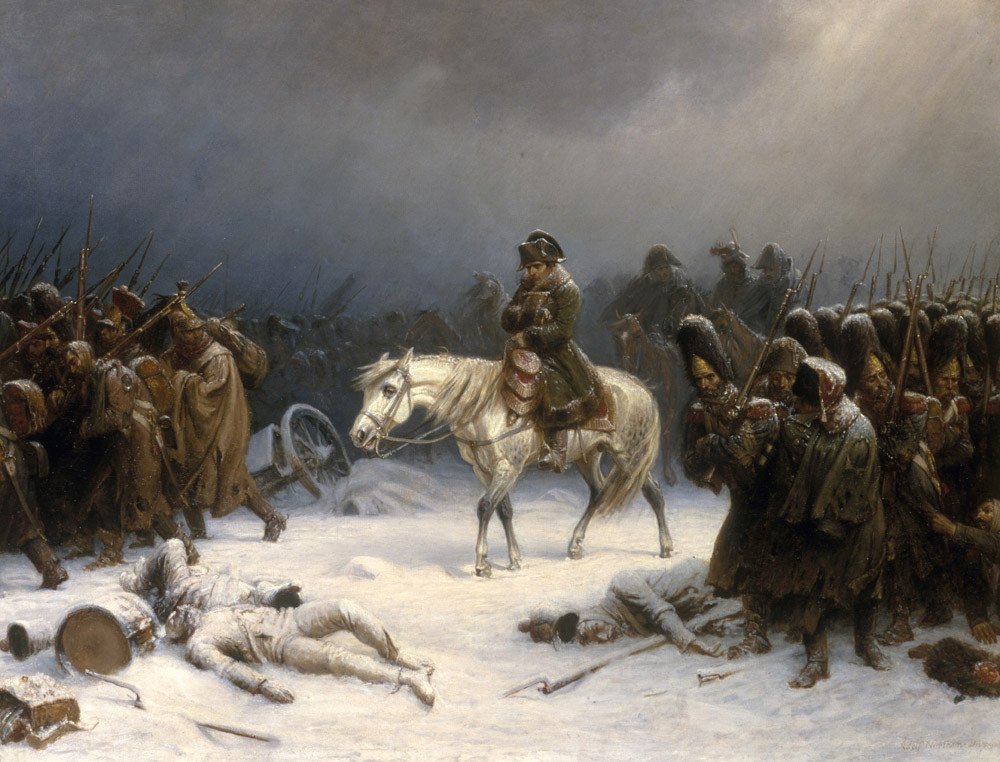Napoleon cake became popular as such during the early 19th century although its history goes further back in time. A French dessert called mille feuille (=a thousand leaves cake) was mentioned in an English cookbook dated from 1733 but the ingredients & method of preparation were analyzed in La science du maître d'hotel cuisinier by Menon fourteen years later. The technique for making puff pastry was finally improved by Marie-Antoine Carême, who served Napoleon -among others. At some point the cake was renamed after the Emperor, most likely by mistake, the sounds being adapted from 'Neapolitan' cake. The early versions of mille-feuille were stuffed with fruit preserve but, after 1800, custard fillings became the obvious choice while the French recipe for napoléon used almond paste.
Napoleon cake became a huge success in Russia, after the French defeat in 1812. At the same time, a layered cake named Alexander was introduced to European cuisines, in honor of the Tsar. Both recipes are popular in Scandinavia, where Alexander I & Napoleon's interests collided.
 |
| Napoleon's retreat from Moscow in 1812 |
The earliest version of mille-feuille is Menon's recipe, dated from 1747: "Pour faire un gâteaux de mille-feuilles, vous prenez une pâte à feuilletage, faites-en cinq gâteaux d'égale grandeur, & de l'épaisseur de deux écus, dans le dernier vous ferez un trou au milieu en forme de croix de Chevalier, pour la grandeur vous vous reglerez sur le plat que vous devez servir, faites-les cuire au four. Quand ils sont cuits & refroidis, mettez-les l'un sur l'autre, celui qui est découpé dessus, & des confitures entre tous les gâteaux, unissez-les tout-autour & glacez partout avec une glace blanche de façon qu'ils paroissent être d'un seul morceau; vous pouvez les enjoliver avec de la gelée de groseilles, écorce de citron confit & pistaches, vous les servirez sur une serviette." (There were detailed instructions on how to make the pastry in earlier chapters.)
NAPOLEON CAKE
This recipe is adapted from Menon, therefore using only jam to fill the pastry. In the original mille-feuille the cake was probably glazed all over, which is impossible here unless you make a thicker sugar icing.
I n g r e d i e n t s
500 g puff pastry
400g fruit preserve
160g powedered sugar
M e t h o d
1. Set the oven to 200C. Line two baking sheets with parchment paper. Roll the pastry thin. Divide into 5 circles or squares of equal size. 2. Bake on the prepared sheets for 15 minutes, or until golden. Let cool on wire racks. 3. Assemble four layers of mille-feuille on a dish, covering each with 100g preserve. Top with the remaining layer. 4. To make the icing: Blend the powdered sugar with 2-3tbsp of water, and pour over the cake. Leave to set for a couple of hours.
V a r i a t i o n
To make a thicker icing, mix half the powedered sugar with lightly beaten egg white and heat in a double-boiler, whisking from time to time. (In this way, you pasteurize the egg.) Pour all over the cake, level with a knife, and leave to set for a couple of hours. Decorate with preserve, candied lemon peel, and pistachios - if liked.
V a r i a t i o n
To make a thicker icing, mix half the powedered sugar with lightly beaten egg white and heat in a double-boiler, whisking from time to time. (In this way, you pasteurize the egg.) Pour all over the cake, level with a knife, and leave to set for a couple of hours. Decorate with preserve, candied lemon peel, and pistachios - if liked.

Comments